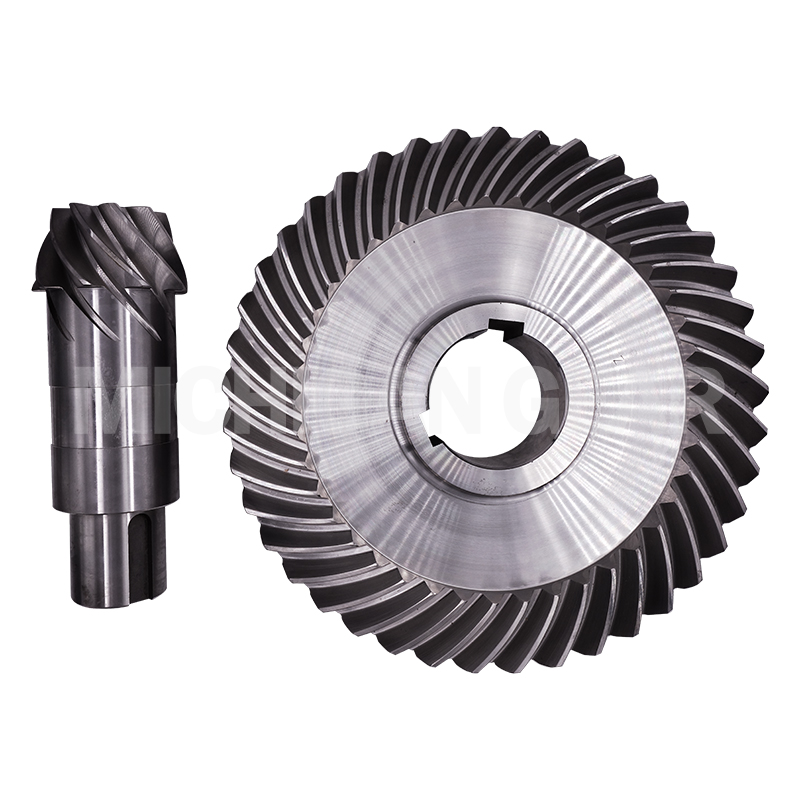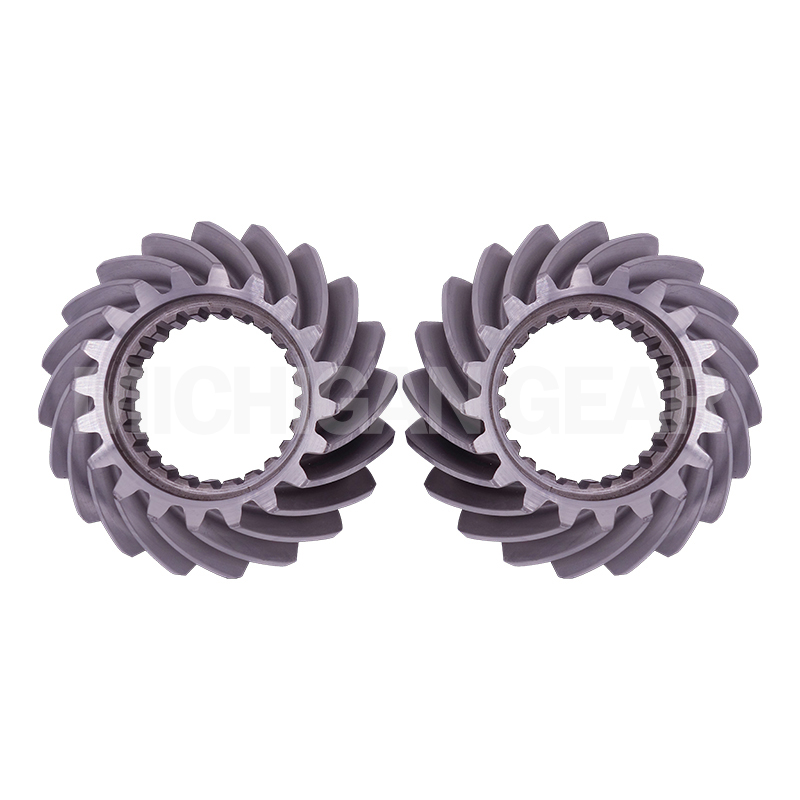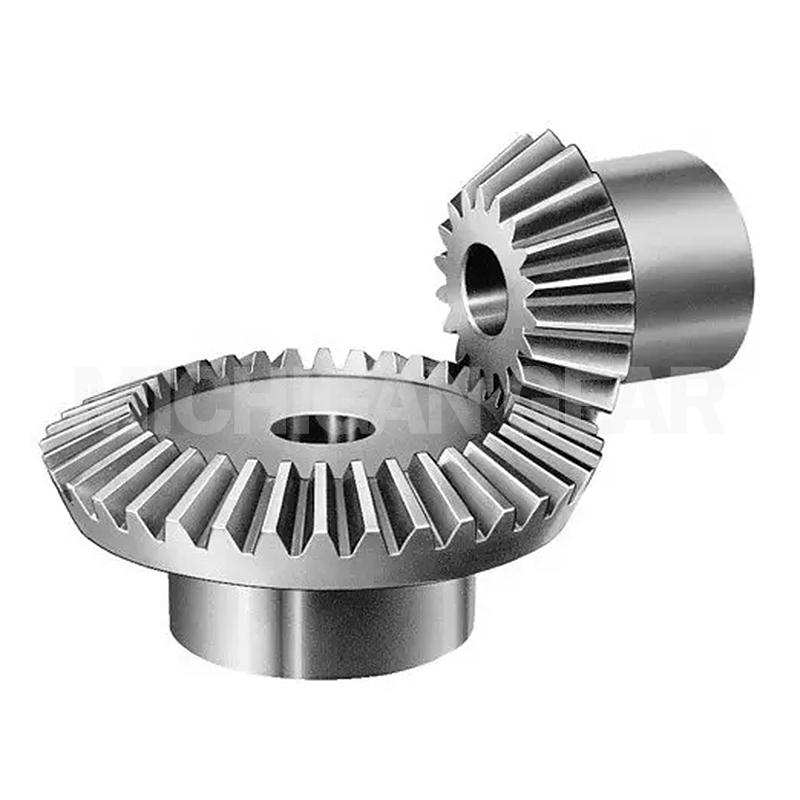What are the types of bevel gears?
The main differences between spiral bevel gears, straight bevel gears, face bevel gears, hypoid gears, and miter gears lie in their design, tooth geometry, and applications. Here's a detailed comparison:
● Design: Teeth are curved and set at an angle.
● Tooth Geometry: Spiral teeth.
● Advantages: Quieter operation and higher load capacity compared to straight bevel gears due to gradual tooth engagement.
● Applications: Automotive differentials, heavy machinery, and high-speed applications where noise reduction and high efficiency are important.
● Design: Teeth are straight and conical.
● Tooth Geometry: Straight teeth.
● Advantages: Simple to manufacture and cost-effective.
● Applications: Low-speed, low-torque applications like hand drills and some conveyor systems.
3. Face Bevel Gears
● Design: Teeth are cut on the face of the gear rather than the edge.
● Tooth Geometry: Can be straight or spiral but are cut perpendicular to the axis of rotation.
● Advantages: Can be used to transmit motion between intersecting but non-parallel shafts.
● Applications: Specialized machinery where space constraints require this specific configuration.
4. Hypoid Gears
● Design: Similar to spiral bevel gears but the shafts do not intersect; they are offset.
● Tooth Geometry: Spiral teeth with a slight offset. (Usually, the ring gear is relatively large, while the other one is relatively small)
● Advantages: Higher load capacity, quieter operation, and allows for lower placement of the drive shaft in automotive applications.
● Applications: Automotive rear axles, truck differentials, and other applications requiring large torque transmission and low noise.
5. Miter Gears
● Design: A subset of bevel gears where the shafts intersect at a 90-degree angle and have the same number of teeth.
● Tooth Geometry: Can be straight or spiral.(The two gears are of the same size and shape)
● Advantages: Simple design with a 1:1 gear ratio, used for changing the direction of rotation without altering speed or torque.
● Applications: Mechanical systems requiring directional change such as conveyor systems, power tools, and machinery with intersecting shafts.
Comparison Summary:
● Spiral Bevel Gears: Curved teeth, quieter, higher load capacity, used in high-speed applications.
● Straight Bevel Gears: Straight teeth, simpler and cheaper, used in low-speed applications.
● Face Bevel Gears: Teeth on the gear face, used for non-parallel, intersecting shafts.
● Hypoid Gears: Spiral teeth with offset shafts, higher load capacity, used in automotive axles.
● Miter Gears: Straight or spiral teeth, 1:1 ratio, used for changing direction of rotation at 90 degrees.
Post time: May-31-2024















